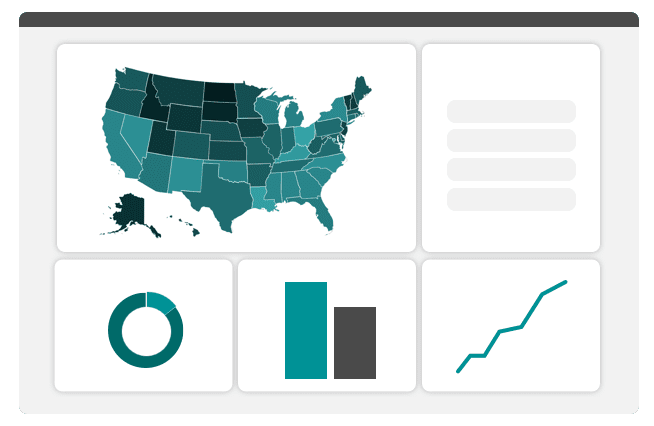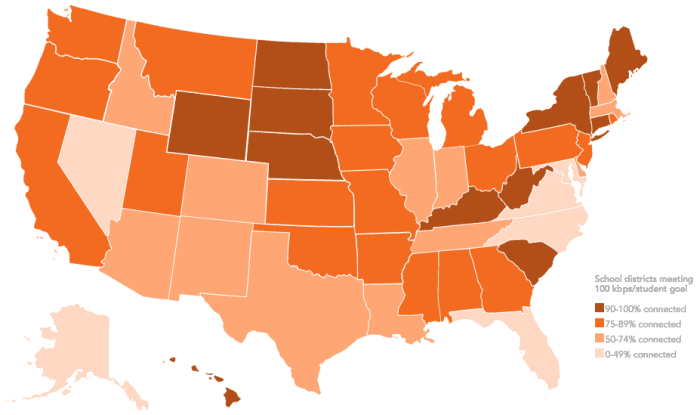Today we are excited to announce the release of our first annual 2015 State of the States report on Internet connectivity in America’s K-12 public schools. The report shows, in the last two years tremendous progress has been made, an additional 20 million students have been connected. Moreover, 38 governors across the country have stepped up and committed to finishing the job of connecting the 21 million students who still don’t have the speeds they need.
In 2013, our SchoolSpeedTest analysis of K-12 broadband purchasing revealed only 30 percent of school districts nationwide met the Federal Communications Commission’s minimum Internet access goal of 100 kbps per student, leaving 40 million students without the broadband needed for digital learning.
Since then, thanks to the modernization of the E-rate program that made an additional $2.5 billion per year in broadband funding available—and the hard work of our team, governors, school district leaders, state-level officials, service providers, and other private and public partners—an additional 20 million students have been connected to the promise of digital learning. Our State of the States analyses also show, while less than 300,000 teachers had the tools they needed in 2013, approximately 1.7 million teachers now have the broadband they need to deliver a 21st-century digital education.
Despite this tremendous progress across the country, 23 percent of school districts nationwide are still not meeting the minimum Internet access goal, leaving 21 million students without the connectivity they need for digital learning. Moreover, the vast majority of school districts, even those meeting today’s connectivity goals, are going to need to grow their Internet access. The typical school district will need to triple its bandwidth over the next three years in order to keep up with growing demand. That is why we are encouraging governors and state leaders to step up and finish the job of to connecting these remaining students to high-speed broadband.
We’ve identified three main actions governors and state leaders must take to finish the job:
- Provide every school with access to fiber. States can leverage the $1 billion of federal funding available over the next three years through the FCC to provide every school across the U.S. with access to fiber. To meet federal connectivity goals, 92 percent of schools will need a fiber optic connection.
- Make bandwidth affordable. A continued focus on affordability, with a goal of lowering the cost of Internet access to $3 per Mbps, can enable another 12 million students across the country to utilize technology in the classroom.
- Provide every classroom with robust Wi-Fi. With over $3 billion of FCC funding for Wi-Fi connections available over the next four years, every school district should be able to upgrade its Wi-Fi to enable one-to-one digital learning in its classrooms.
Tackling these three main barriers is the key to bridging the connectivity gap in America’s classrooms. With the inspiring progress we’ve made over the last two years and the insights provided by the 2015 State of the States report, we are confident that together we can ensure all students have access to high-speed broadband and the promise of digital learning.
See national and state-by-state highlights or read the full report.






